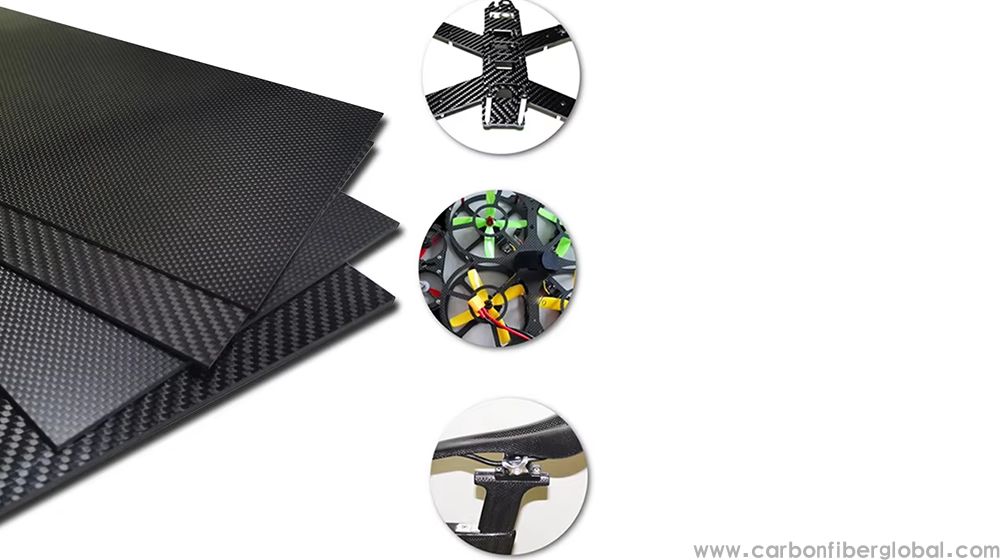In today’s fast-paced and innovation-driven world, industries across the globe are constantly seeking ways to improve their products’ performance, reduce weight, and increase efficiency. One material that has made a monumental impact on Modern Manufacturing is Carbon Fiber Sheets. With their unique combination of strength, lightweight properties, durability, and versatility, Carbon Fiber is revolutionizing how products are designed and produced in various sectors, from aerospace to automotive, and even sports equipment.
In this article, we’ll explore why Carbon fiber sheets are considered a game-changer in modern manufacturing and how they’re transforming industries worldwide.

1. Superior Strength-to-Weight Ratio
One of the most remarkable characteristics of carbon fiber sheets is their strength-to-weight ratio. Carbon fiber is stronger than steel but significantly lighter, making it an ideal material for industries where weight reduction is essential without compromising strength. This property is particularly valuable in sectors like aerospace, automotive, and sports equipment manufacturing, where every gram of weight saved can result in significant performance improvements.
In the aerospace industry, for example, reducing the weight of an aircraft is critical to improving fuel efficiency and reducing operational costs. Carbon fiber sheets provide a lightweight alternative to traditional metals, helping to build lighter, more efficient aircraft. Similarly, in the automotive industry, lighter carbon fiber components improve fuel economy, enhance handling, and boost performance without sacrificing durability.
2. Unmatched Durability and Longevity
While carbon fiber is incredibly light, it is also extraordinarily durable. It has high tensile strength and is highly resistant to fatigue, wear, and corrosion, making it a top choice for products that need to withstand harsh environments and heavy use.
In high-performance vehicles, such as race cars and sports cars, carbon fiber is used extensively in body panels, frames, and interiors to enhance both strength and longevity. It resists damage from impacts better than conventional metals, providing manufacturers with durable products that last longer and require less maintenance.
Carbon fiber’s resistance to corrosion is particularly advantageous in the marine and construction industries, where materials are constantly exposed to water, salt, and harsh chemicals. Unlike metals that rust or degrade over time, carbon fiber remains intact, reducing the need for frequent replacements or repairs.
3. Heat Resistance and Thermal Stability
Another key feature of carbon fiber sheets is their heat resistance and ability to maintain structural integrity at extreme temperatures. Unlike metals that expand or contract with temperature fluctuations, carbon fiber maintains its dimensional stability, making it ideal for high-heat applications in industries such as aerospace, automotive, and electronics.
In aerospace, carbon fiber components like engine nacelles, wings, and heat shields are subjected to extreme temperatures during flight. The material’s ability to withstand both high heat and cold temperatures ensures that it doesn’t warp or lose strength, even in the most challenging conditions. Similarly, in the automotive sector, engine components and brake systems benefit from carbon fiber's heat resistance, ensuring the materials perform optimally even under high-stress, high-temperature environments.
4. Design flexibility and Customization
One of the main advantages of carbon fiber sheets is their design versatility. Carbon fiber can be molded and shaped into a wide variety of configurations, offering unmatched design flexibility compared to Traditional materials. Manufacturers can create components with varying levels of stiffness, thickness, and durability to meet specific performance requirements.
For instance, sports equipment manufacturers can design bicycles, tennis rackets, and skateboards using Custom carbon fiber sheets to achieve the optimal combination of lightweight, flexibility, and strength. Similarly, in the aerospace and automotive industries, the ability to create precise, custom-molded components allows for innovations in aerodynamics, structural integrity, and safety.
By layering and combining carbon fiber sheets with different matrix resins, manufacturers can achieve unique properties, such as greater stiffness, more flexibility, or better impact resistance. This customization is invaluable in creating Tailored solutions for highly specialized products in various fields.
5. Cost-Effectiveness in the Long Run
While carbon fiber sheets tend to be more expensive than traditional materials such as steel or aluminum, the long-term cost savings often outweigh the initial investment. Carbon fiber’s strength, durability, and lightweight nature result in fewer replacements and repairs, which translates into lower maintenance and operating costs over the life of the product.
In aerospace, for example, the use of carbon fiber reduces fuel consumption by decreasing the overall weight of aircraft. In automotive manufacturing, reducing the weight of vehicles can lead to significant fuel savings and lower emissions over time. For high-performance vehicles, using carbon fiber results in less wear and tear on components, reducing the need for repairs and extending the lifespan of the vehicle.
Moreover, carbon fiber is highly recyclable, which reduces the environmental impact of manufacturing and disposal. As industries continue to focus on sustainability, carbon fiber’s recyclability and low waste generation offer a more eco-friendly alternative to conventional materials.
6. Advancing Sustainability in Manufacturing
As industries face increasing pressure to reduce their environmental footprint, carbon fiber is emerging as an eco-friendly solution. Carbon fiber sheets are often manufactured using sustainable practices, and the material itself is recyclable, reducing the demand for raw materials and minimizing waste.
In the automotive and aerospace industries, the use of carbon fiber not only reduces weight and improves performance but also helps manufacturers meet environmental regulations related to carbon emissions. By creating lighter, more energy-efficient products, businesses can reduce their overall environmental impact while still achieving high-performance results.

